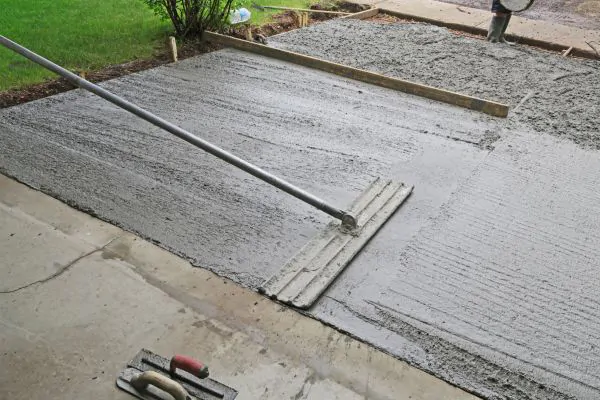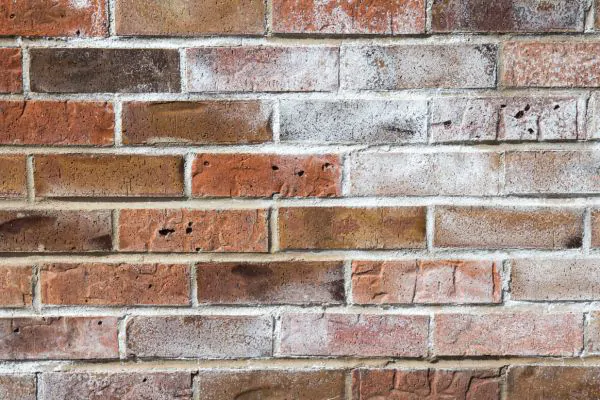Are you eyeing that fresh concrete driveway and itching to park your car on it? Patience is key here. It’s tempting to rush, but knowing when the time is just right to drive on new concrete can save you from costly repairs and headaches down the road.
Concrete might look ready long before it actually is, which leads many folks into an all-too-common bind: damaged surfaces due to premature use.
Here’s a quick fact: Concrete reaches its full strength after about 28 days of curing under ideal conditions a process not visible to the naked eye but crucial for durability. In this blog post, we’ll guide you through understanding how long you need to wait before driving on your newly poured concrete.
We’ll cover everything from essential curing knowledge to practical tips for assessing readiness all aimed at ensuring your concrete stands strong against those tire treads. Ready for some solid advice? Let’s get started!
Understanding Concrete Curing
Now that you’re familiar with the basics, let’s dive into what concrete curing really means and why it’s so critical for your driveway’s longevity. Concrete curing is the process where newly poured concrete dries and hardens to achieve its full strength.

This isn’t just about waiting for the surface to dry; it’s a chemical reaction between water and cement that needs time to work its magic fully. During this crucial phase, concrete gains durability and resistance against cracks, which ultimately dictates when you can start driving on your new pavement.
You might be eager to use your new driveway, but patience pays off in the long run. It takes an average of seven days for standard concrete mixtures to cure enough for light traffic like cars or foot travel.
However, reaching optimal strength could take up to 28 days depending on different factors such as temperature, humidity levels, and the type of mixture used. Rushing this period not only risks damaging your investment but also compromises safety – both key reasons why respecting cure times is non-negotiable.
Keep these points in mind as we explore other elements that influence how long you should wait before taking that first drive on your fresh concrete surface.
Factors Influencing Concrete Curing Time
A variety of elements can significantly affect how long your concrete needs to cure before you drive on it. Temperature is a key factor; warmer weather can speed up the curing process, while cooler temperatures can slow it down.
Also critical is the mix design—a high early-strength concrete mix will cure faster than a regular set mix.
Humidity levels play into this equation as well. Low humidity can cause water in the concrete to evaporate too quickly, leading to weaker results. Conversely, high humidity helps retain moisture within the mixture, aiding proper strength development.
The size and shape of your project matter too. Thicker slabs take longer to cure because they need more time for hydration at their center. Additionally, additives or admixtures included in the concrete influence curing times—accelerators shorten them whereas retarders extend them.

Don’t forget about post-pouring treatments either! Covering new concrete with wet burlap or plastic sheets traps moisture and keeps the curing environment consistent.
Finally, initial setting time doesn’t equal full strength time—it’s essential not to confuse these two stages if you want sturdy and durable pavement that stands up over time under all those heavy loads from driving on it.
Industry Standards and Recommendations

Experts in the concrete industry have set clear guidelines for how long you should wait before driving on new concrete. Typically, a standard concrete driveway needs at least seven days to cure properly before it can bear the weight of your car.
However, heavy vehicles or equipment might require an even longer waiting period to avoid damaging the surface.
Following these recommendations is crucial for ensuring the longevity and strength of your concrete. Professional concrete contractors often suggest waiting up to 28 days for a full cure, which ensures maximum hardness and durability.
Always check with your local professionals because they understand regional factors that may affect curing times. Trust their advice; it comes from years of experience and understanding of what works best under specific conditions.
Curing Time for Different Concrete Application
Different concrete applications have varying curing times. For instance, for foot traffic, the curing time is usually around 24 to 48 hours. However, for vehicles or heavy equipment, it’s advisable to wait at least seven days before driving on the new concrete.
It’s essential to allow sufficient time for the concrete to dry and harden adequately before subjecting it to heavier loads.

In colder temperatures, such as below 40°F (4°C), consider extending the curing time by several days. Conversely, in warmer climates with temperatures above 80°F (27°C), the curing process may speed up but requires additional moisture retention measures to prevent cracking.
Understanding these factors will ensure that your concrete application achieves optimal strength and durability in its intended use case.
Why the Edges Need Extra Time

When concrete is poured, the edges often get less attention and experience different conditions than the rest of the slab. The edges lose moisture more quickly, making them more susceptible to cracking and scaling.
Therefore, it’s essential to provide extra curing time for the edges to ensure they achieve the same strength and durability as the rest of the concrete.
To prevent potential issues with your concrete project, giving special attention to curing the edges will promote overall structural integrity and longevity. Keeping this in mind during your construction or renovation process can save you from costly repairs down the road.
How Temperature and Humidity Play a Role
Temperature and humidity can significantly impact the curing time of concrete, affecting its strength and durability. For a detailed understanding of how these factors influence concrete curing, continue reading to ensure the longevity of your concrete structure.
How to Know When Your Concrete is Ready
To know when your concrete is ready for driving, wait until it achieves the specified strength. You can test this by pressing a screwdriver or nail into the surface – when it doesn’t leave an impression, the concrete is likely strong enough to bear weight.
Another method involves conducting a “slump test” using a simple cone-shaped mold. After filling and removing the mold, measure how much the concrete slumps. If it stays within acceptable limits, you’re good to go.
Failure to adhere to the recommended curing period before driving, walking, or parking on your fresh concrete can lead to the following consequences:
Failing to follow the recommended curing period for your newly poured concrete can result in premature wear and tear, leading to cracks, surface spalling, or even structural damage.
It may compromise the strength and durability of the concrete, causing it to be less resilient and more prone to deterioration over time. Additionally, improper curing can impact the overall appearance of the concrete surface, resulting in discoloration or a rough texture that detracts from its aesthetic appeal.
Moreover, not allowing sufficient curing time before subjecting fresh concrete to vehicular or foot traffic can impede proper bonding between aggregates and cement paste, reducing its ability to withstand heavy loads without experiencing degradation.





